|
SUNSET OVER THE BU GIA MẬP NATIONAL PARK
Phung My Trung - Nguyen Thi Lien Thuong - ADMIN
The shower that started the rainy season poured down impetuously as soon as we took our first steps into the jungle; it came as unexpectedly as it went, so fast, leaving a wisp of vapor over the low hills, the path was slippery as if it forewarned of a hard and dangerous trip in exploring the Bù Gia Mập National Park in the province of Bình Phước. The cool showers also promised an abundant collection of specimens that we needed for our studies.
On the meandering path that began from the buffer area leading to the core region of the national park, the ethnic Stiêng women had just got home after a tiring day working hard on the uncultivated field to earn food for their families. Their faces reflected a day's hard work with a heavy "gùi" on their backs, filled up with wild vegetables , bamboo shoots and woodsticks, but they were still excited looking into our camera lens.
The first inhabitant in the national park that greeted us was a Black kite sturdy eagle biologically named Milvus migran which was holding in his claws a yellow and Banded krait - the vanquished in a life and death struggle - a Bulgarus fasciatus , an extremely venomous snake, a real menace to all other kinds of snakes.
Probably being absorbed in searching for food and unable to find time to run away from the unexpected rain, a Blue-crested lizard Calotes mystaceus (a kind of a rather popular reptile here) was drying up himself on a foot of a rotten tree on the roadside, trying to regulate his body heat and enjoy the fresh vapor of the coming rain. The suspicious look of his eyes seemed to be watchful of the menaces lurking in the shadows and the lowest noise was enough for him to run away into the nearest bush.
|
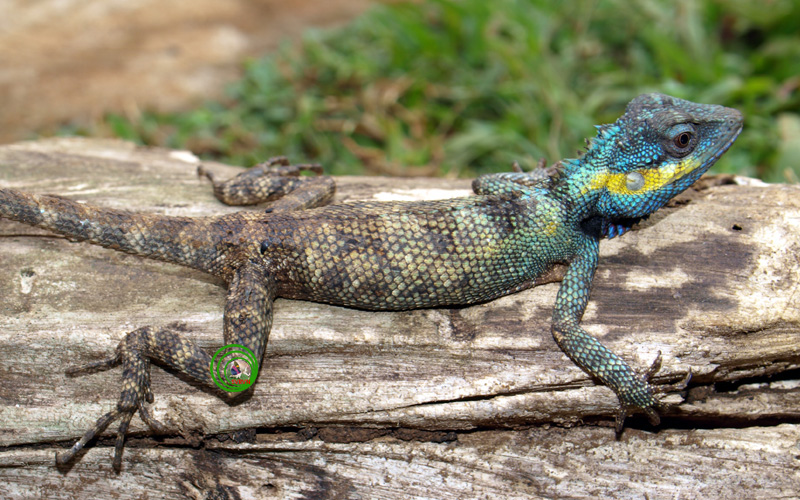
|
|
Sunset was quietly coming down over the Bù Gia Mập National Park. In the far distance the sun that looked like a giant fireball was moving away, leaving the quiet and unsettled night to the world of the animals which were fighting for life and trying to maintain their race for later generations to live on. Somewhere on the rugged old trees which survived for thousands of years, a cicada with its mouth that looked like the elephant's tusk - the Pyrops sp. - was raising its voice - a jungle musical at the end of the day - which was carried away along the wind and the rustling leaves.
|
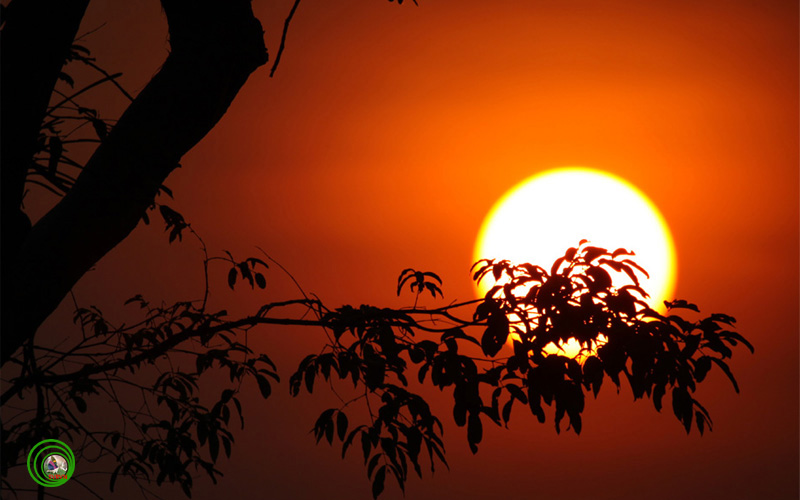
|
|
As soon as my camera that looked like a corn cop, flashed up, the poor cicada with its mouth that looked like the elephant's tusk ( elephant trunk ) , took off away. It seemed it perceived the strong light for the first time in its life. This was a rare moment in the period of my life when I devoted all my effort to the studies of the diversified biology that I could catch part of its wing - although I had dreamed so many times to obtain a picture of my own that I could cherish for all my life.
|
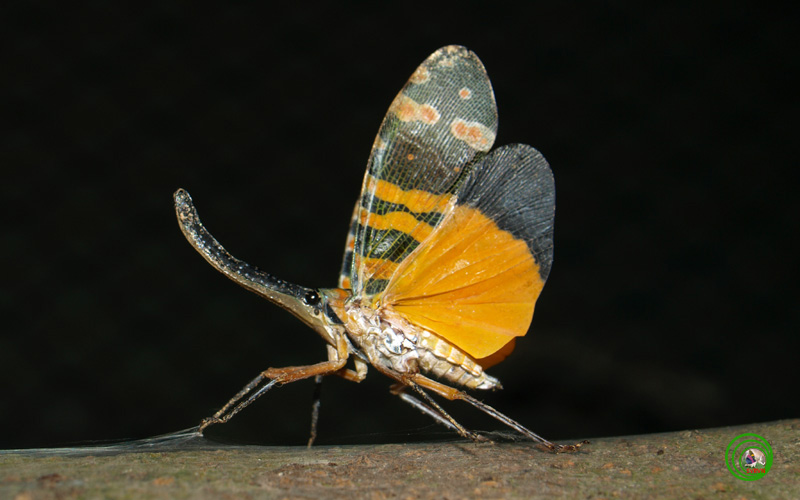
|
|
I had prepared the light equipments to obtain the specimens and some tools specially made for a hard and challenging night - at this moment the starving terrestrial leeches had woken up looking for food. They crave for the drops of blood from the hot-blooded creatures for laying eggs and for survival. Our skin and flesh is also the favorite food for thousands of terrestrial leeches which are waiting under the rotten mats. However, there are more blood-sucking creatures that exist in the jungle, that means in these jungles there are still more wild animals, the environment is still very good - an indicative of a forest environment. If a jungle were acted upon by human beings, it means these blood-sucking creatures would be the first to be wiped out.
|
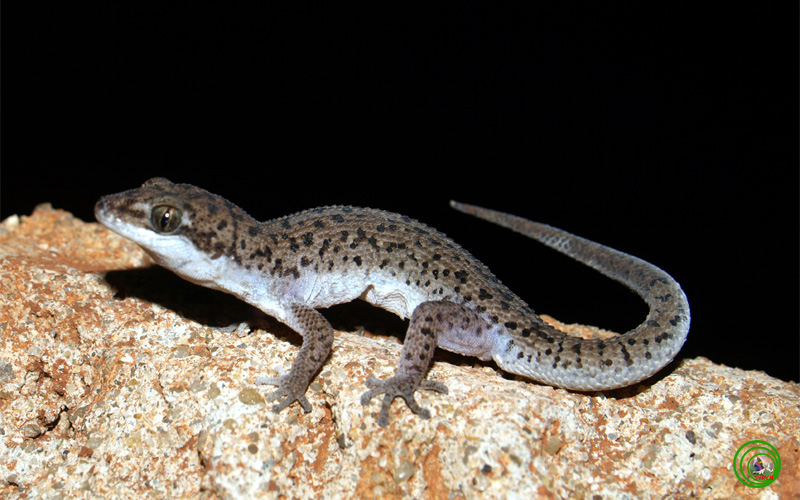
|
|
After we had walked for a few yards, the first creature we discovered was a lizard biologically named Dixonius siamensis. This is a kind of rarely found lizards, since being of a tiny size, they move so nimbly in the dark that it is so hard for us to catch them. It seems this lizard had just filled up its stomach with a fat prey that it found under the rotten mat, therefore it seemed to move more slowly than usual. Lying piled up on the surface of the earth were the barks of a bằng lăng tree, which was taking off its rugged and tight coat and putting on a new one. Suddenly we heard the sound of a Blotched burrowing frog Calluella guttulata echoing calling for its mate. This is a rarely found species since they had just been discovered in the Bù Gia Mập National Park just recently, and it is the smallest species among the bull-frogs that had ever been discovered in Vietnam .
|
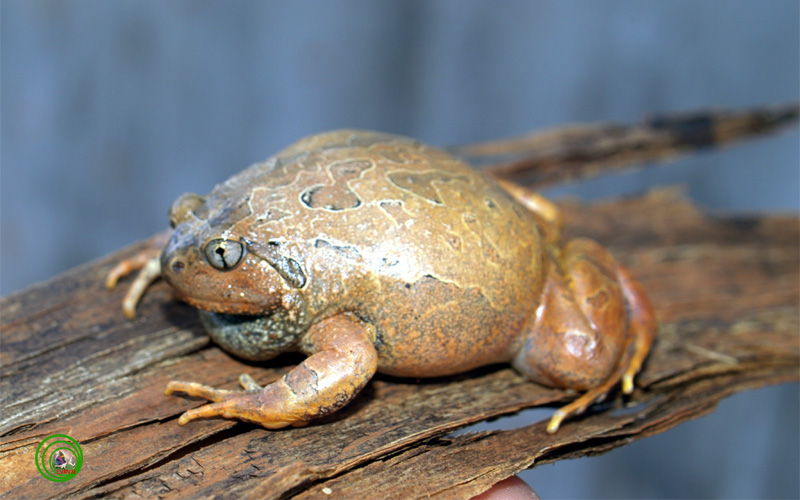
|
|
We had just passed by a fallen tree that blocked the way when I raised my camera and clicked repeatedly; my colleague who had been working together with me as a forestry worker shouted excitedly as he saw the bewitching beauty of the long-horned orchid flowers Macropodanthus alatus which were hanging on a tiny twig. The flowers that were just blossoming at the beginning of the season appeared so effulgent on the dry twig, their fragrance spreading all over a region as if they were inviting the night insects to come and enjoy the anther-dust. Challenging the orchid empress with long horns, in a hidden and darker corner, a bunch of golden sword orchids Cymbidium finlaysonianum were trying to show off their beauty bashfully.
|
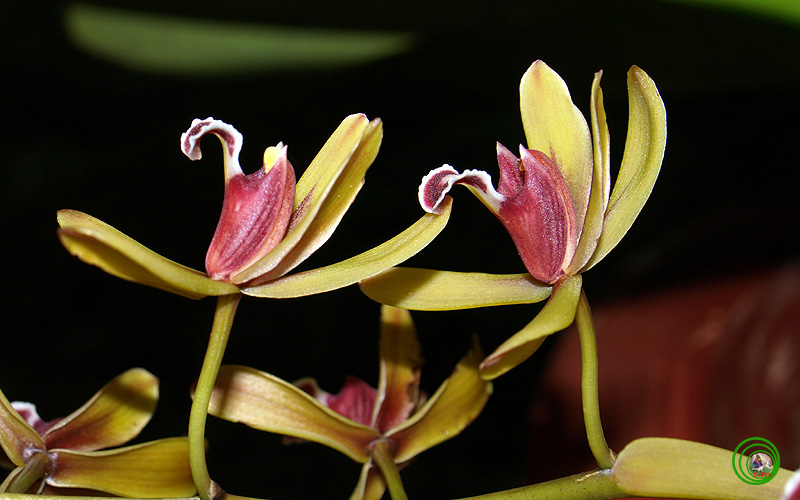
|
|
It was past midnight already, but we still continued walking up the Dakar brook. During this season the brook had been reduced to a small stream flowing peacefully, not so recklessly and turbidly as it had been on the days toward the end of the rainy season. However we had to be very watchful of the unexpected flood at the head of the current since in a few minutes the water could rise up as high as a few meters and could carry away everything that would block its way.
On the stone near the shore, the plant which had been classified in the red book in Vietnam - the ant-hill plant - biologically named Hydnophytum formicarum - was showing off its raceme of blazing red fruits under the flash light and the symbiotic ants were working noisily at the swelling part of the root to help the plant grow up well owing to the nourishing food discarded from the superabundant food that the ants brought back home for storage.
The small and interesting discoveries about these plants could become the useful documentation for a scientific film that I had nurtured for a recent future.
On the way back to the number 2 forestry stop, one more time we unexpectedly came across a kind of orchid biologically named Brachypeza laotica . Until now, one still wonders whether this kind of orchid has ever existed in Vietnam . For several years, the scientists have made persistent effort trying to find it, but there has not been any evidence of its being present in our country. At this present time it is showing off its effulgent beauty in front of our camera lens, surprise follows surprise in tireless efforts.
We walked home while the sun was rising over the Bù Gia Mập National Park - gradually reddening at the foot of the faraway mountain. The wild birds were beginning to wake up welcoming a new day, flight by flight calling one another to be ready to enjoy dawn. Suddenly a long howl of a Black-shanked douc, the Pygathrix nigripes , was echoing in perfect harmony with the chorus of the green forest.
Footnote: The Bù Gia Mập National Park is situated northwest of the Bình Phước province in the administrative area of the Đăk O, Bù Gia Mập hamlets (Phước Long district). On the west and northwest is the Đăk Huýt brook, which is the border between Vietnam and Cambodia . In the east and northeast lies the Đăk Nông province. The total area of the park is 26.032 ha. The area of the buffer region of the Bù Gia Mập National Park is 15.200 ha (7.200ha belongs to Bình Phước and 8.000ha belongs to Đăk Nông).
|
![]()
![]()
